Crime of the Century!” roared The Times of London headline. On a clear Saturday in December 1875, a massive explosion had caused dozens of casualties, many fatal, in the German port town of Bremerhaven. A prominent American businessman living in Germany, William King Thomas, had insured a barrel of caviar that had slipped off its winch while being loaded aboard the passenger liner Mosel, on which Thomas was booked to England. Unexpectedly, the barrel exploded with a roar that was heard even in Hamburg, 60 miles away. Approximately 80 people were killed outright in the explosion and 50 more injured. Soon, Thomas was found fatally wounded in his cabin. He had shot himself, having left a note admitting his culpability for the catastrophe. The “caviar” was in reality dynamite and had been connected to a timer that Thomas had planned to go off days later while the Mosel was sailing in the Atlantic, its fate forever unknown, its perpetrator free of suspicion. Thomas intended to have disembarked by then. Instead, the “accident” would earn him a dubious posthumous sobriquet, “The Dynamite Fiend.”
The malign soul responsible for this tragedy was no American businessman. William King Thomas was an alias used by Alexander “Sandy” Keith, a native of Scotland who initially rose to prominence as a key Confederate sympathizer in the port city of Halifax, Nova Scotia. Keith was, however, a scurrilous rogue, a sociopath motivated not by a desire to aid the South but by his own greed and a penchant for violence.
Keith’s evil nature has left many at a loss for words. Fellow blockade-runner John Wilkinson described him as “a coarse, ill-bred vulgarian of no social standing in the community.” Charles Tinker, a Union codebreaker dispatched to Halifax to report on Keith, concluded he “was capable of any crime in the calendar.” Even his biographer, Ann Larabee, describes him as “a vicious Mr. Hyde….a man who thought nothing of destroying entire passenger ships and all onboard for personal gain.”
On the surface, this man was the Confederacy’s best “friend” in a key foreign port during the war. He actually bilked Southern agents repeatedly and murdered dozens of seamen and at least one prominent Southern spy to collect insurance settlements.
Alexander Keith’s father, John, named his son after the boy’s uncle, John’s older brother. The brothers both operated breweries in Halifax. John struggled; however, Alexander Keith’s brewery, established in 1820, still operates, selling its suds across North America. The elder Alexander Keith was a pillar of Halifax society, serving as mayor twice before the Civil War, and as grand master of Nova Scotia Freemasons. In every sense, looking over the city from his estate, Keith Hall, he was truly surveying his demense. Keith hired his young nephew, who quickly became his uncle’s right-hand man. By the time the first shots of the Civil War were fired at Fort Sumter in April 1861, the 35-year-old “Sandy” Keith walked among Halifax’s economic and political elite.
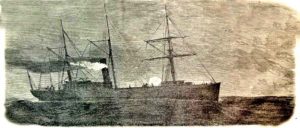
The Civil War aroused strong emotions among Halifax’s city fathers. Some, like the elder Keith, were abolitionists and firm supporters of the North. But in a case of “my enemy’s enemy is my friend,” imperialists incensed at what they considered Union infringements on British sovereignty and international maritime law supported the Confederacy. Wide awareness that Southern cotton was essential to England’s textile industry, and of the money to be made in the illicit trade of that cotton, encouraged Southern sympathies. Many, including the younger Keith, were enamored by the wealth and aristocratic airs of the Southern exiles they encountered. Divided though opinion may have been, Halifax was, like Montreal, a “secesh” city.
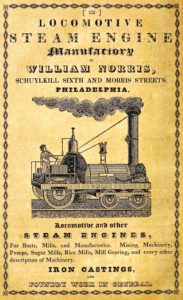
Sandy Keith saw the Union blockade, or more specifically, avoiding it, as a fast track to unimaginable wealth. In 1863 he left his uncle’s employ and moved out of Keith Hall into a luxurious suite at the Halifax Hotel. He partnered with Benjamin Wier, a wealthy and established import-export merchant, and quickly became involved in provisioning blockade runners, beginning with Fanny and Jenny in July 1863. Keith became the Halifax agent for the Importing and Exporting Company of the State of Georgia, owned by steamboat pioneer and blockade runner Gazaway Lamar, father of “Fire-eater” Charley LaMar, who had run the last large load of African slaves (more than 400) into the United States aboard Wanderer in 1858. According to Ann Larabee, “Keith’s rooms in the Halifax Hotel became the rollicking headquarters of blockade runners who came in and out of port.” Although Wilkinson dismissed Keith as “an ill-bred vulgarian,” he also conceded that Keith won friends and influenced people with “brazen assurance, a most obliging manner, and the lavish expenditure of money.”
Keith’s close association with blockade runners, Southern exiles, and Confederate sympathizers was cemented in December 1863 when he played a significant role in the so-called “Chesapeake Affair.” Captured by Confederate agents disguised as civilians, the passenger ship Chesapeake was retaken by two Union warships. The seizure, though, took place in Nova Scotian waters, angering the British and sparking an international incident. Eventually a delicate compromise was reached. Chesapeake was brought to Halifax, where three prisoners—all British subjects who plotted to take over the ship—were to be turned over to local authorities. Two were to be released while the third, George Wade (who had killed a Chesapeake sailor), was to be arrested, then extradited to the United States.
The intricate diplomatic arrangements were for naught. Legal niceties required that Wade be unshackled on the pier and then, as a free man, arrested by Nova Scotian authorities. During that brief moment of freedom, a rowboat appeared alongside the wharf as three men simultaneously assaulted William Hutt, the local arresting officer. Wade leapt into the skiff and two oarsmen pulled away, secreting him in Ketch Harbor, 10 miles southwest of Halifax.
One of Hutt’s assailants was none other than Sandy Keith. Despite the blatant illegality of their actions and charges against the three, their trials were a mockery of justice. Witnesses insisted that since Hutt was not in uniform, the men were heroes for having intervened when he was seen with a weapon. The escapade secured Keith’s reputation as the unofficial “Confederate consul” in Halifax.
[quote style=”boxed” float=”left”]Keith won friends with ‘brazen assurance, a most obliging manner, and the lavish expenditure of money.’[/quote]
The U.S. government was well aware of Keith’s role in Confederate affairs. Dispatches from the U.S. consul in Halifax, Mortimer Melville Jackson, often contained Keith’s name, and not in a complimentary manner. Only days after Wade’s escape, the New York City’s postmaster intercepted a letter written in a weird, complex code. It was addressed to Keith in Halifax. Fortunately for the Union, three War Department telegraph operators had taught themselves the art of codebreaking. Known as the “Sacred Three,” the cryptanalysts finally deciphered the letter, and a second seized three days later. The encoded letters, written by a Confederate agent known as J.H. Cammack, revealed a vast network of spies and agents throughout the Union and even extending to Montreal and Halifax. The covert operators’ plans, which included everything from counterfeiting and currency printing to piracy, was shocking. There was a plot to buy and smuggle 12,000 muskets into the South and another to seize and arm vessels to be operated as raiders. There were even plans to use Greek fire, an ancient chemical concoction of dubious efficacy, to start a conflagration that would consume New York City.

Brewmaster
The elder Alexander Keith was born on the banks of River Thurso in Hacraig, Caithness, Scotland, on October 5, 1795. At 17, he headed south to learn the new techniques of “scientific”’ brewing. Five years later, his apprenticeship completed, he set out for Halifax, Nova Scotia. There he quickly found employment as brewmaster and business manager for Charles Boggs, the owner of a small Halifax brewery.
The business prospered, as did Keith. He quickly moved up to partner and then bought out his former employer in 1820. The enterprise was astonishingly successful and after two moves to larger facilities, it settled on Hollis Street in a custom built three-story sandstone-and-brick building. Keith’s business interests expanded into insurance, banking, and railroads over the following decades.

As he prospered Keith turned his attention to politics. He was defeated in the colonial election of 1840. However, he was elected to the Halifax city council in 1841 and mayor by 1843. In the 1850s, he served a second term as mayor and as the President of the Legislative Council (provincial parliament) from 1867 to his death in 1873.
Finally, Keith was a dedicated Freemason, serving as Grandmaster of Nova Scotia commencing in 1840.
Alexander Keith was laid to rest in Camp Hill Cemetery in downtown Halifax in December 1873. But his life story could hardly have been more different from that of his notorious nephew. —B.G.
In August 1863, Kentucky-born doctor Luke Blackburn arrived in Halifax to consult with Keith. Blackburn, a yellow fever specialist working in Bermuda, where the disease was rampant, had dreamed up a plot to ship trunks full of disease-infected clothing and bedding to Keith. The trunks were then to be transshipped to points throughout the North and the clothing distributed to soldiers and civilians on the home front.
Assassination also figured into the scheme. The conspirators planned to send an especially fine suit and shirts exposed to yellow fever to President Abraham Lincoln himself. The delivery man, Geoffrey Hyams, lost his nerve, but not before meeting Keith as his guest in Halifax and later, possibly in Philadelphia.
[quote style=”boxed” float=”left”]Keith could clearly foresee the Confederacy’s impending defeat by 1864. so, too, did he see the end of the fabulous profits of blockade running.[/quote]
The articles were actually harmless. As Army physician Walter Reed discovered in 1900, yellow fever is transmitted by mosquito bites, not by contact with “infected” items. Despite the Keystone Cops aspect of the whole affair, it did show Keith’s willingness to do anything. Indeed, his fervor and commitment impressed his Confederate networks.
But the commitment was hollow. Keith could clearly foresee the Confederacy’s impending defeat by the beginning of 1864. He could also see the end of the fabulous profits of blockade running. While outwardly continuing to support his associates’ efforts, his thoughts turned to swindling them in order to quickly accumulate a postwar nest egg.
Unexpectedly, a golden goose fell into his lap. Luther Rice Smoot, quartermaster general of the state of Virginia and a part-time blockade runner, came to town looking for him. Smoot’s scheme: Locomotives for the South and a little profit for everyone involved. Locomotives would be bought in Philadelphia ostensibly to be shipped to Halifax, then on to Scotland. Instead, the transports would head south and run the blockade. First, Smoot needed a “purchaser” willing to order and own them, if only in name. Robert Lang, a Halifax mine owner, agreed to do that. With $25,000 in hand, Keith would act as Lang’s purchasing agent. His cut would depend on his efficacious execution of the project.

But now it got complicated. Keith, combining business with insatiable greed, approached another Haligonian with his own proposal. James Forman was general manager of the Bank of Nova Scotia. A decade after the war, it was revealed he had defrauded the bank throughout his 40 years there: a man after Keith’s heart, if ever there was one. Keith explained that he was going to Philadelphia to buy locomotives to run the blockade and Forman could buy into this deal if he kept it confidential. Forman invested $45,000. Moreover, Lang and Forman were partners in a mining operation. Yet neither knew of the other’s involvement. Keith duped a third “confidential investor” to the tune of $20,000. And so it went that Sandy Keith arrived in the City of Brotherly Love with a cool $85,000 in his pocket.
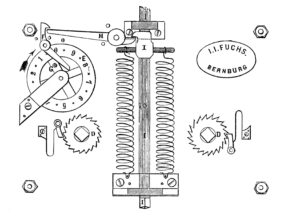
Checking in to the Continental Hotel, he assumed the role he loved, that of the affluent, almost aristocratic bon vivant. He visited Norris Locomotive Works, the largest locomotive works in the United States. From the company’s sprawling shops, furnaces, and forges at 17th and Hamilton streets, locomotives were shipped to South America, Russia, and all points in between. Keith discussed details with Norris craftsmen and negotiated the purchase of two locomotives. By early August 1864, they were complete and ready to be shipped. On August 16, they were seized by federal agents. The ruse collapsed instantly; the locomotives’ gauge matched that of Southern railways, not those in Scotland.
Keith always insisted he had been betrayed by Hyams (of the yellow fever plot) with whom he may have met in Philadelphia. Further, Hyams was disgruntled as Blackburn had refused him his final payment when he would not deliver the “fatal” gifts to President Lincoln. All in all, however, the betrayal claimed by Hyams seems less likely than another far simpler explanation. Norris Locomotive Works is a more likely location for the leak. Did Keith really think one of the world’s leading locomotive manufacturers would not be familiar with the gauges in use in various regions of the world? Prior to the war, they had done a great deal of business in the South. They would have instantly recognized a locomotive being built to Southern specifications.
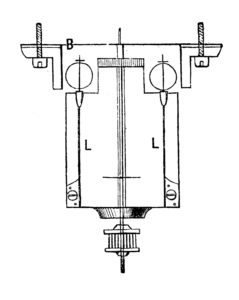
Keith feigned his innocence, arguing he had no knowledge of the real purchasers or their nefarious purposes. He insisted he had been hired by Lang, a respectable Halifax businessman. Remarkably, the alibi worked. Keith was released to return to Halifax while each of his thwarted partners raged in silence.
While running the locomotive scam, Keith discovered, quite by accident, a second lucrative income stream: maritime insurance fraud. In order to frustrate the seizure of blockade runners they often had “owners of record” in Halifax. This made them, technically, vessels of a neutral power and not subject to Union Navy commandeering.
Through the Lamars, Keith was introduced to Harold W. Kinsman. A wealthy Charleston furniture manufacturer, Kinsman bought a paddle-wheeler called Caledonia in Liverpool. Kinsman needed an owner of convenience and Keith had been recommended as politically sound and trustworthy. Keith agreed and promptly the ship sank on its first blockade-running voyage. As owner of record, the ship’s insurer paid out to Keith $32,000. Despite his long relationship with the Lamars, Keith simply refused to reimburse Kinsman the insurance settlement money. Kinsman had no recourse; his actions in the first place were extralegal and Keith was 1,600 miles away, in a different jurisdiction. Sandy Keith, however, had left another very disgruntled creditor in his wake.
Major Norman Walker, Confederate disbursing agent in St. George’s, Bermuda, arrived in Halifax in August 1864, days after the locomotives were seized, just in time to greet Keith, returning from Philadelphia. The Walkers came north to avoid yellow fever and friends had assured them that Halifax was a comfortable “secesh-friendly” haven. Georgina Walker noted they were received “with much kindness, & attention & found the society intensely Southern.” Her husband must have enjoyed the city also, particularly the “attention” of his newfound friend, Sandy Keith.
[quote style=”boxed” float=”left”]A clear pattern was emerging. Ships involved with Alexander keith met Neptune’s grave with astonishing frequency.[/quote]
Within weeks Keith had convinced Walker that a $40,000 investment in barreled pork to be smuggled through the blockade to the Confederate Army could earn Walker a fortune. Remarkably, Walker took the bait, and Keith was $40,000 richer based solely on his “brazen assurance, a most obliging manner, and the lavish expenditure of money.” Keith had no intention of purchasing any pork. Instead, he prevaricated, blaming chaotic wartime conditions and the interference of corrupt customs agents.
Patrick Martin was for much of the war the senior Confederate Secret Service officer in British North America and an occasional blockade runner. His participation in the multimillion-dollar trade in illicit Southern cotton operating out of Montreal was at the root of his power and influence. The first two of these vocations meant Keith had known him and worked with him as spies, messengers, and agents of every alignment passed between the two cities.
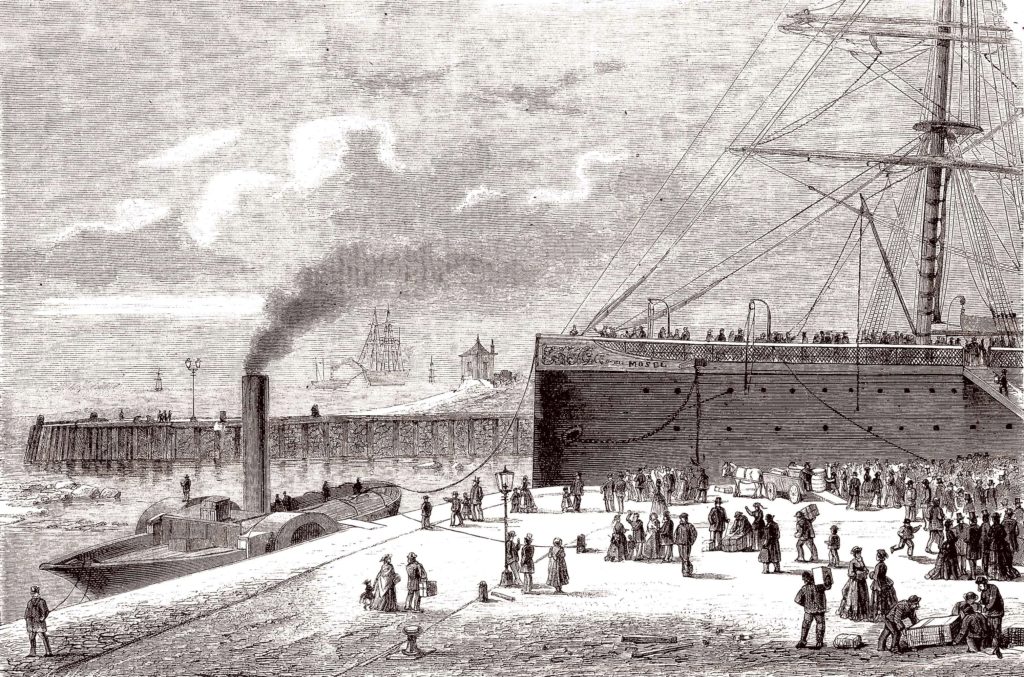
No surprise, they decided to invest as partners in a pair of schooners. Keith persuaded Martin to sail with one of the ships on its first trip up the St. Lawrence River from Montreal. The ship was never seen again, Martin apparently drowning along with all hands. As the only surviving partner, Keith received a $100,000 insurance windfall. When Martin’s widow appealed to him for some consideration, he refused to surrender a penny. The other ship, Marie Victoria, sank in the St. Lawrence, taking with it, of all things, John Wilkes Booth’s valuable costume collection, being shipped south after the actor had ended a Canadian tour.
A clear pattern was emerging: Ships involved with Keith met Neptune’s grave with astonishing frequency. (In fact, the final act of his life, in Bremerhaven in 1875, was a marine insurance swindle.) Each time the evidence was only circumstantial—dead men tell no tales and mid-ocean catastrophes leave no survivors. Still, it is impossible not to connect the dots. Keith was sinking ships, killing dozens of people at a time, to reap the rewards of insurance fraud.
By late 1864, Keith had fled Halifax. The great deceiver announced loudly to all that he would be traveling to Boston. He assured Walker that he was off to recover the pork, purloined by perfidious U.S. customs officers. His creditors were assured this coup would allow him to wipe the slate clean. He actually remained in Boston long enough only to be joined by Mary Clifton, a former maid at the Halifax Hotel who had caught his eye. The pair vanished into the anonymity of New York City.
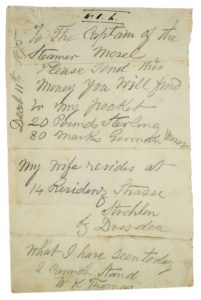
Keith’s creditors were in no way willing to lose their money to the likes of him. His intimate involvement in Confederate operations had also sparked federal government interest, with Allen Pinkerton’s agents now involved. Keith abandoned both Mary and New York. He fled first to St. Louis, and in the spring of 1865 to the small town of Highland, Ill., where he adopted the alias Alexander King Thompson.
The war was over, but Smoot continued obsessing over his failed locomotive investment. He petitioned the U.S. government for their return, claiming there was no proof they were intended for the Confederacy. And he pursued Keith relentlessly. On a visit to Halifax, he interviewed the aggrieved maid, Mary, who told him Keith was somewhere near St Louis. When local police there were shown Keith’s carte de visite, a detective immediately recognized him.
Smoot headed west, joined by a St. Louis detective and the local marshal, and arrested Keith, confining him in a St. Louis police station. Smoot demanded his money; Keith persuaded the angry creditor to accept $10,000 worth of bonds. On New Year’s Day 1866, Keith was released. Immediately, along with his new wife, Cecelia, he fled to Europe. Sandy Keith, now William King Thomas and once the “Confederate consul in Halifax,” slipped into history as the mass-murdering “Dynamite Fiend.”
Bob Gordon is a Canadian historian specializing in military and social history.





